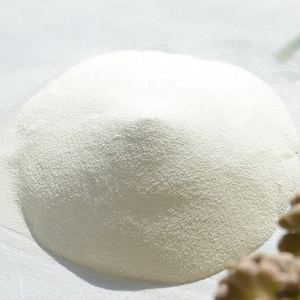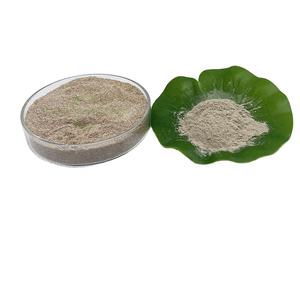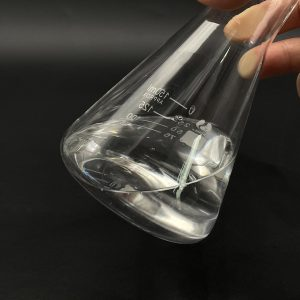1. Introduction
Just 24 hours ago, a viral TikTok video reignited public concern about ‘sulfate-free’ shampoos, with over 2 million views questioning whether sodium lauryl sulfate (SLS) is truly harmful. This renewed interest underscores how deeply this common ingredient is woven into our daily lives—from toothpaste and body wash to lawn care products. But what exactly is sodium lauryl sulfate, and why does it appear in so many formulations?

Sodium lauryl sulfate—also known as sodium dodecyl sulfate (SDS), natrium lauryl sulfate, or simply SLS—is a powerful anionic surfactant. Surfactants are compounds that lower surface tension between liquids or between a liquid and a solid, enabling better spreading, foaming, and cleaning. The meaning of surfactant comes from ‘surface-active agent,’ and SLS is one of the most effective and economical examples in use today.
2. What Is Sodium Lauryl Sulfate?
Chemically, sodium lauryl sulfate is derived from lauryl alcohol (often sourced from coconut or palm kernel oil) and sulfuric acid, followed by neutralization with sodium hydroxide. Its molecular formula is C12H25SO4Na, and it’s classified as an anionic surfactant because it carries a negative charge in solution.
You’ll often see it labeled as sls sodium lauryl sulfate, na lauryl sulfate, or lauryl sulfate on ingredient lists. Despite minor naming variations—like sulfate vs. sulphate (British spelling)—they all refer to the same compound. It’s important not to confuse it with sodium laureth sulfate (also called sodium lauryl ether sulfate or sodium lauryl ether sulphate), which is a milder, ethoxylated version often abbreviated as SLES.
3. How Does SLS Work as a Surfactant?
As an anionic surfactant, SLS has a hydrophilic (water-loving) head and a hydrophobic (oil-loving) tail. This dual nature allows it to surround oil and dirt, lifting them off surfaces and suspending them in water so they can be rinsed away. This is why SLS is so effective in shampoos, soaps, and detergents—it creates rich lather and deep cleansing.

In contrast, non ionic surfactant types like polysorbate 80, span80, or ethoxylated alcohol don’t carry a charge and are often used as emulsifiers. Cationic surfactants, such as cetyl trimethyl ammonium bromide (CTAB) or cetyltrimethylammonium bromide, carry a positive charge and are common in conditioners for their anti-static properties. Amphoteric surfactants like cocamidopropyl betaine (also called coco betaine, amidopropyl betaine, or coco amido propyl betaine) can switch charge based on pH and are prized for their mildness.
4. Common Uses of SLS Beyond Personal Care
While most people associate SLS with shampoos and toothpaste, it’s also widely used in industrial and agricultural settings. For example, sodium lauryl sulfate for sale is commonly purchased as a surfactant for herbicides and weed killers. When added to products like Roundup, it acts as a lawn wetting agent or wetting agent for grass, helping the solution spread evenly and penetrate waxy plant surfaces.
Other surfactants used in agriculture include lignin sulfonate, methylated seed oil, and bio surfactants like rhamnolipids. These enhance the efficacy of active ingredients by improving adhesion and absorption—critical for effective weed control.
5. Is SLS Safe? Alternatives and Concerns
SLS has faced criticism for being a skin and eye irritant, especially at high concentrations or with prolonged exposure. However, regulatory bodies like the FDA and EU Cosmetics Regulation consider it safe in rinse-off products at typical usage levels (usually 1–15%).

Because of consumer demand for gentler options, many brands now use alternatives such as:
- Sodium laureth sulfate (SLES or sls sodium laureth sulfate): milder due to ethoxylation
- Alkyl polyglucoside and decyl glucoside: plant-derived, non-ionic, and biodegradable
- Coco glucoside and sodium coco sulfate (sometimes labeled as coco sodium sulfate)
- Sodium lauroyl sarcosinate (lauroyl sarcosinate or sarcosinate): a mild anionic surfactant
- Sodium cocoyl isethionate and sodium lauroyl methyl isethionate: creamy, low-irritant cleansers
- Sodium cocoyl glutamate: an amino acid-based surfactant
These alternatives are often featured in ‘sulfate-free’ products and are especially popular in formulations for sensitive skin or baby care.
6. SLS in the Broader Surfactant Landscape
SLS is just one member of a vast family of surfactants. Others include ammonium lauryl sulfate (also called ammonium dodecyl sulfate or ammonium lauryl sulphate), sodium dodecylbenzene sulfonate (a common detergent builder), and even specialty types like fluoro surfactants or sodium deoxycholate (used in labs).
Nonionic surfactant options like pluronic 127 (poloxamer 188), ethoxylated alcohols, and bio surfactants are gaining traction for their environmental profile. Meanwhile, cationic surfactant compounds like CTAB remain essential in disinfectants and fabric softeners.
Interestingly, some surfactants—like copper 1 bromide or rohit surfactants private limited products—are niche industrial chemicals not used in consumer goods. This highlights how diverse the surfactant world truly is.
7. Conclusion
Sodium lauryl sulfate remains a cornerstone of modern cleaning and formulation science due to its effectiveness, low cost, and versatility. While it’s not the gentlest option available, it’s generally safe when used as intended. Understanding the difference between anionic, cationic, non-ionic, and amphoteric surfactants—like cocamidopropyl betaine versus SLS—empowers consumers to make informed choices. Whether you’re picking a shampoo or mixing a weed killer, knowing what’s in your surfactant matters.
Our Website founded on October 17, 2012, is a high-tech enterprise committed to the research and development, production, processing, sales and technical services of ceramic relative materials such as What. Our products includes but not limited to Boron Carbide Ceramic Products, Boron Nitride Ceramic Products, Silicon Carbide Ceramic Products, Silicon Nitride Ceramic Products, Zirconium Dioxide Ceramic Products, etc. If you are interested, please feel free to contact us.


